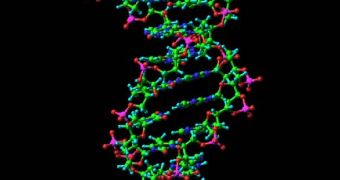Learning how to propel and direct DNA molecules in their natural “environment” has been a long-term goal of geneticists, which they have been trying to reach ever since they started copying genetic information. The way they did that was through the use of an enzyme known as RNA polymerase, which, oddly enough, also proved to be the key to making DNA travel back and forth. Experts at the University of Wisconsin-Madison (UWM) managed to successfully propel and guide DNA molecules through a solution, using the polymerase as an “engine.”
In a paper published in the latest online edition of the Journal of the American Chemical Society, the team at the university, led by genomicist David C. Schwartz, say that they were able to control billions of DNA molecules at a single time, which means that the age of highly miniaturized, massive scientific experiments is almost upon us.
“This lays the basis for experiments that configure themselves and operate themselves. It will be possible to design intelligent systems to do billions of experiments” at the same time, Schwartz shares. He is also the senior author of the ACS paper.
“Up until now, we've done this kind of work with robots. Biotechnology robots dumbly move samples around. Here, we have intelligent agents that are single molecules – they can make decisions and they can evolve. We have something very new and powerful and miniature,” the expert adds. Schwartz envisions a future in which test tubes at laboratories around the world are filled with billions of DNA molecules, riding around on their polymerase engines, and involved in dozens or hundreds of experiments at the same time.
“The molecules can make decisions based on the environment they find themselves in. You can set them loose, but they sense and interact with their environment. And what makes it hugely scalable is it is very simple,” Schwartz explains. As an example, such DNA molecules could be put to work in finding what new compounds are effective in fighting a certain kind of pathogen. This could yield efficient drugs for serious medical conditions in shorter time spans than current investigation methods allow for.
The direction of the “motorized” DNA can be influenced by placing various chemicals in the solution the molecules live in, in specific concentrations. It's all chemistry from there, Schwartz pinpoints. “The RNA proteins act like little motors. The complex can then propel itself through space,” he concludes, as quoted by PhysOrg.

 14 DAY TRIAL //
14 DAY TRIAL //